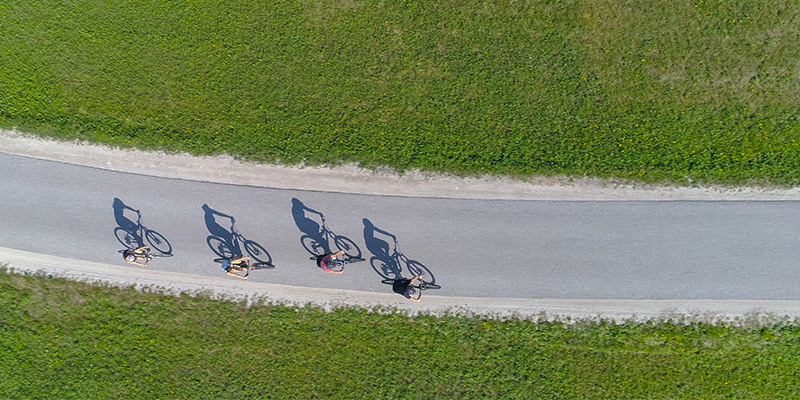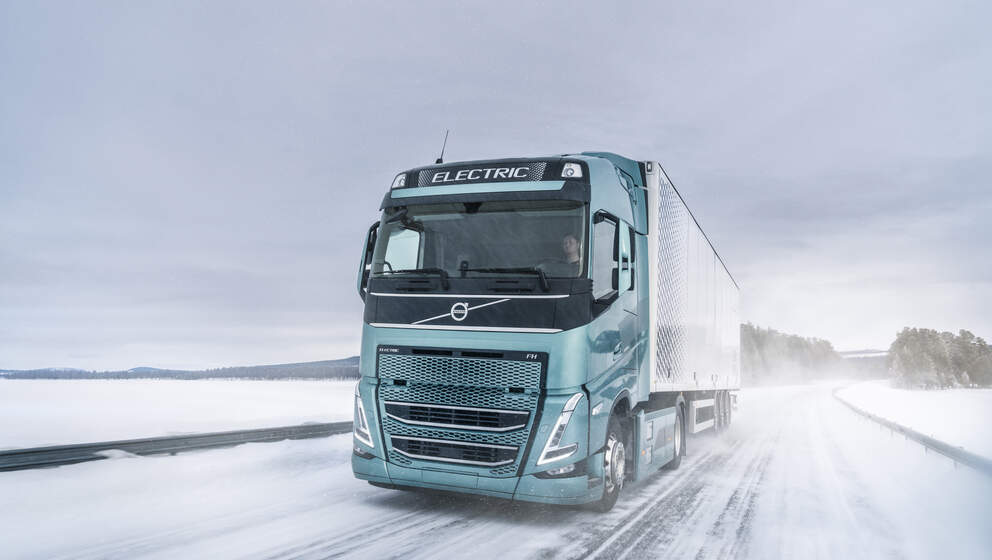Transportation
18.01.2021
5 trends that will drive sustainable mobility in 2021
What direction will transport take post-pandemic? We asked five leading researchers to share their predictions for 2021.
1. Cities rethink commuting to combine safety and sustainability

Daniel Quiggin
Senior Research Fellow of think tank Chatham House’s Energy, Environment and Resources Programme
How do local authorities balance Covid-safe transport to work with maintaining improved air quality?
“A key trend for 2021 is how cities will deal with more people wanting to drive to their place of work to avoid Covid-19 infection whilst vaccines are rolled out – how do local authorities balance this with maintaining improved air quality?” asks Daniel Quiggin, a former policy advisor to the UK government.
Indeed, the events of the last 12 months have ushered in a reassessment of public transport use in cities. Those who can’t eschew cities altogether are using cars more often. Meanwhile, busses, trams and trains are considered rolling petri dishes – in the UK, bus driver deaths due to the virus prompted a public inquiry in the summer.
But while travelling by car may feel safer, Daniel Quiggin is worried that more internal combustion engines in cities will undo recent improvements in urban air quality. “In the short-term, I think a lot rests on e-bikes and a further adoption of cycling.”

However, more cycling doesn’t represent the catch all solution for local mobility. Quiggin believes that in 2021, more will have to be done to support the public transport sector:
“If governments are truly committed to tackling climate change, then public transport is a sector that they will have to support,” he says. “They will have to keep putting public money into supporting those assets, because it is those that we need in the future to enable people to continue to move around in a low carbon way.”
2. Governments are forced to commit to decarbonization

Randall Field
Executive Director of the Mobility of the Future study at the MIT Energy Initiative
Governments need to send a very clear signal about their future commitment to decarbonizing mobility
“With a new president taking up residence in the White House, there is reason again to be optimistic about our climate goals,” says Randall Field, who is in charge of mobility research at the MIT Energy Initiative, the division dedicated to transforming the world’s energy systems for a low-carbon future.
However, Field is also slightly worried.
Following the covid-19 pandemic, he notes, the world must now confront two problems at the same – manage the economic fallout from the virus and transition to a more sustainable future.
That means making mobility more sustainable in a way that also creates jobs.
“Electrification isn’t going to happen overnight because there are certain obstacles, including driving range, recharging and price,” says Field. “And so, the world will evolve in a certain direction that will include electrification of mobility and alternative fuels including biofuels and hydrogen.”
Field believes that governments must create more favourable conditions for the adoption of sustainable mobility solutions in 2021, especially when it comes to using biofuels in freight.
“The key thing for success of biofuels is government action that would make biofuels more economic for the consumers, truck drivers or haulage companies,” he says. “Technology will continue to evolve, but governments need to send a very clear signal about their future commitment to decarbonizing mobility.”
3. Covid recovery accelerates adaption of advanced technologies

Susan Shaheen, Ph.D.
Director of Innovative Mobility Research and Professor In-Residence of Civil and Environmental Engineering at UC Berkeley
Co-Director at the Transportation Sustainability Research Center
Covid recovery will foster a more robust environment for advancing mobility as a service
While the covid pandemic has undoubtedly interrupted many areas of the transport industry (consider aviation), it has accelerated the adoption of new technologies within it as well, including telework and platforms to support virtual meetings and conferences. Susan Shaheen believes that the virus will usher in new innovations that will foster a more robust environment for mobility as a service.
As people return to cities in 2021, Shaheen says that there could be renewed interest in services that offer public transit and driver information, parking, road conditions, as well as share-ride services. “We also have seen a growth in micromobility (a range of small, lightweight vehicles, such as e-scooters and e-bikes; both personally owned devices and shared services) due to interest in social distancing and active transportation, which is likely to continue into 2021 as well.”

“Many communities are investing in infrastructure and policies to support micromobility,” says Shaheen. “These include slow or open streets and reallocating curb space from vehicle parking to other uses – like loading zones for deliveries, space for outdoor dining, and commerce.”
This new phase of sustainable mobility will further embrace social equity, as the virus exposed many inequities, altering the fabric of cities around the world. Shaheen imagines a new kind of city where individuals can move more easily from one destination to another, and where streets no longer double as car parks.
These developments will serve to make travel less wasteful, more equitable, efficient, and cleaner.
4. Massive investments into research prime the phase-out of fossil fuels

Dr. Rachel Freeman
Research Fellow in Energy Transitions at University College London’s Bartlett School of Environment, Energy & Resources
We will see research that aims to bring stuff to market
“Ahead of COP26, I expect to see a raft of transport-related research efforts this year,” says Dr. Rachel Freeman of UCL’s Bartlett School of Environment, Energy & Resources. “There will be a lot of investment in laying the groundwork for a transition away from fossil fuels. So charging stations, battery technology for EVs – not early stage research but the level that brings stuff to market.”
Freeman believes when it comes to decarbonizing transport, change could come from the bottom, riding on the digital revolution with new models of transport provision, as well as from the top. “Many developed nations have already reached ‘peak travel’. In the future, we’ll see a gradual decrease in the demand for both passenger and freight transit,” she says, “and so changes in transport efficiency will start to bring emissions down. That may not be so in developing countries, however.”
According to Freeman, the COVID-19 pandemic has impaired the aviation market. While fewer planes in the sky also means fewer emissions, the airlines that continue to operate must find cleaner ways to do so. Using biofuels in aviation is more feasible than electrification.
“There needs to be improvement here in real terms,” says Freeman. “The whole transport industry needs to get better at vehicle efficiency, for example by lightweighting or improving aerodynamics.”

5. Climate urgency increases demand for biofuels

Jonas Eliasson
Visiting Professor of Transport Systems at Linköping University
Director of Transport Accessibility at Swedish Transport Administration
We can’t just go on using fossil fuels while electrification is further developed
The time humanity has to cut CO2 emissions to come into line with the Paris Agreement is narrowing. To do that, Jonas Eliasson of Linköping University believes that the old lessons of transport management could be more widely adopted: “Traditional traffic planning, ensuring that road volumes are kept down – many of these things are still sensible,” he says.
In the next decade, Eliasson believes that the key to making transport sustainable is electrification. But in the next year, biofuels will emerge as a more achievable means of reducing carbon emissions. “The adoption of electric vehicles in road transportation and freight is of paramount importance,” he says. “But we can’t just go on using fossil fuels for these things while electrification is further developed.”
As we continue down the path to electrification, Eliasson thinks it is unlikely that biofuels will fall by the wayside. “The consumption of biofuels in the road transportation sector is likely to peak in 2035 because after that hopefully the proportion will favour electrification,” he says.
“But with increased production capacity for biofuels, we then can look at their use for air and sea transportation. This will also mean more effective sustainable certifications on the biomass used and better knowledge of where the raw materials come from.”


